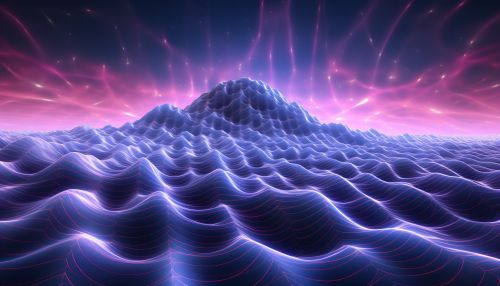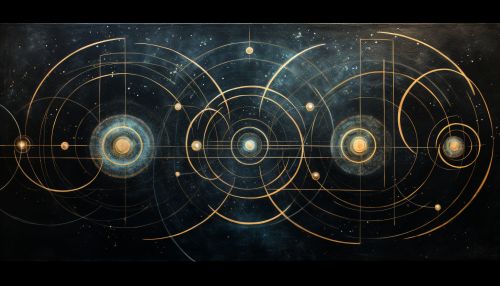The Physics of Quantum Field Theories
Introduction
Quantum Field Theory (QFT) is the theoretical framework for constructing quantum mechanical models of subatomic particles in particle physics. It is a set of principles describing the fundamental forces and forms of matter in the universe, combining the principles of quantum mechanics and special relativity. QFT treats particles as excited states of an underlying physical field, associated with specific fundamental particles.


Principles of Quantum Field Theory
QFT is built on the principles of quantum mechanics and incorporates the laws of special relativity. It describes the quantum mechanical behavior of particles, such as electrons and photons, and their interactions. The fundamental principle of QFT is that all particles of a given type are excitations of a corresponding underlying quantum field. These fields are represented by quantum field operators, mathematical objects that create or annihilate particles at specific points in spacetime.


Quantum Mechanics
Quantum mechanics is the branch of physics dealing with the mathematical description of the motion and interaction of subatomic particles. It incorporates the principles of superposition, wave-particle duality, and uncertainty. QFT extends these principles to systems of particles, treating each particle as a quantized field or wave.
Read more about Quantum Mechanics
Special Relativity
Special relativity is a theory of the structure of spacetime, formulated by Albert Einstein in 1905. It describes how measurements of space and time by observers in different inertial frames of reference are related. QFT incorporates the principles of special relativity, treating particles as excitations of fields that exist throughout spacetime.
Read more about Special Relativity
Fields and Particles
In QFT, particles are treated as excitations of underlying quantum fields. Each type of fundamental particle is associated with a specific quantum field. For example, electrons are excitations of the electron field, and photons are excitations of the electromagnetic field.


Quantum Fields
Quantum fields are mathematical objects that describe the state of a system of particles. They are represented by field operators, which create or annihilate particles at specific points in spacetime. Each point in spacetime is associated with a field operator, and the state of the field at that point is represented by the operator's eigenvalues.
Read more about Quantum Fields
Particles
Particles are treated as excitations of their corresponding quantum fields. The properties of a particle, such as its mass and charge, are determined by the properties of its field. For example, the mass of an electron is determined by the properties of the electron field, and the charge of an electron is determined by the properties of the electromagnetic field.
Interactions and Forces
QFT describes the interactions between particles in terms of the exchange of other particles, called force carriers or gauge bosons. The four fundamental forces - electromagnetism, weak nuclear force, strong nuclear force, and gravity - are each associated with a specific type of gauge boson.


Electromagnetism
Electromagnetism is mediated by the exchange of photons, the gauge bosons of the electromagnetic field. The electromagnetic interaction between charged particles is described by Quantum Electrodynamics (QED), the first successful QFT.
Read more about Electromagnetism
Weak Nuclear Force
The weak nuclear force is mediated by the exchange of W and Z bosons. It is responsible for radioactive decay and nuclear fusion. The theory of the weak interaction is called Quantum Flavordynamics (QFD).
Read more about Weak Nuclear Force
Strong Nuclear Force
The strong nuclear force is mediated by the exchange of gluons, the gauge bosons of the strong nuclear field. It is responsible for holding protons and neutrons together in atomic nuclei. The theory of the strong interaction is called Quantum Chromodynamics (QCD).
Read more about Strong Nuclear Force
Gravity
Gravity is described by General Relativity, but it is not yet fully incorporated into QFT. The hypothetical gauge boson of the gravitational field is the graviton.
Conclusion
Quantum Field Theory is the foundation of our understanding of the physical universe. It provides a framework for describing the fundamental forces and forms of matter, and it has been extraordinarily successful in predicting the behavior of subatomic particles. However, many questions remain, such as the nature of dark matter and dark energy, the unification of gravity with the other forces, and the behavior of quantum fields at the Planck scale.


